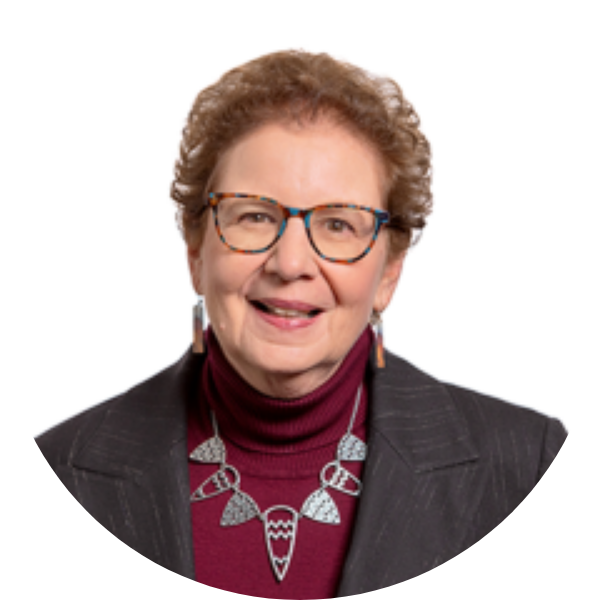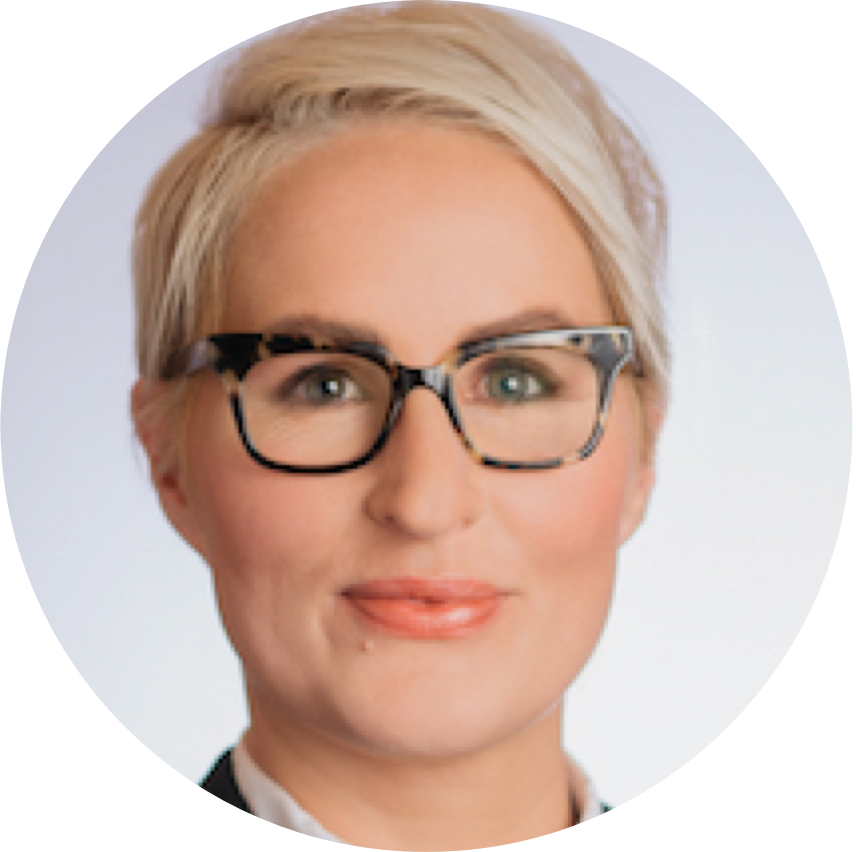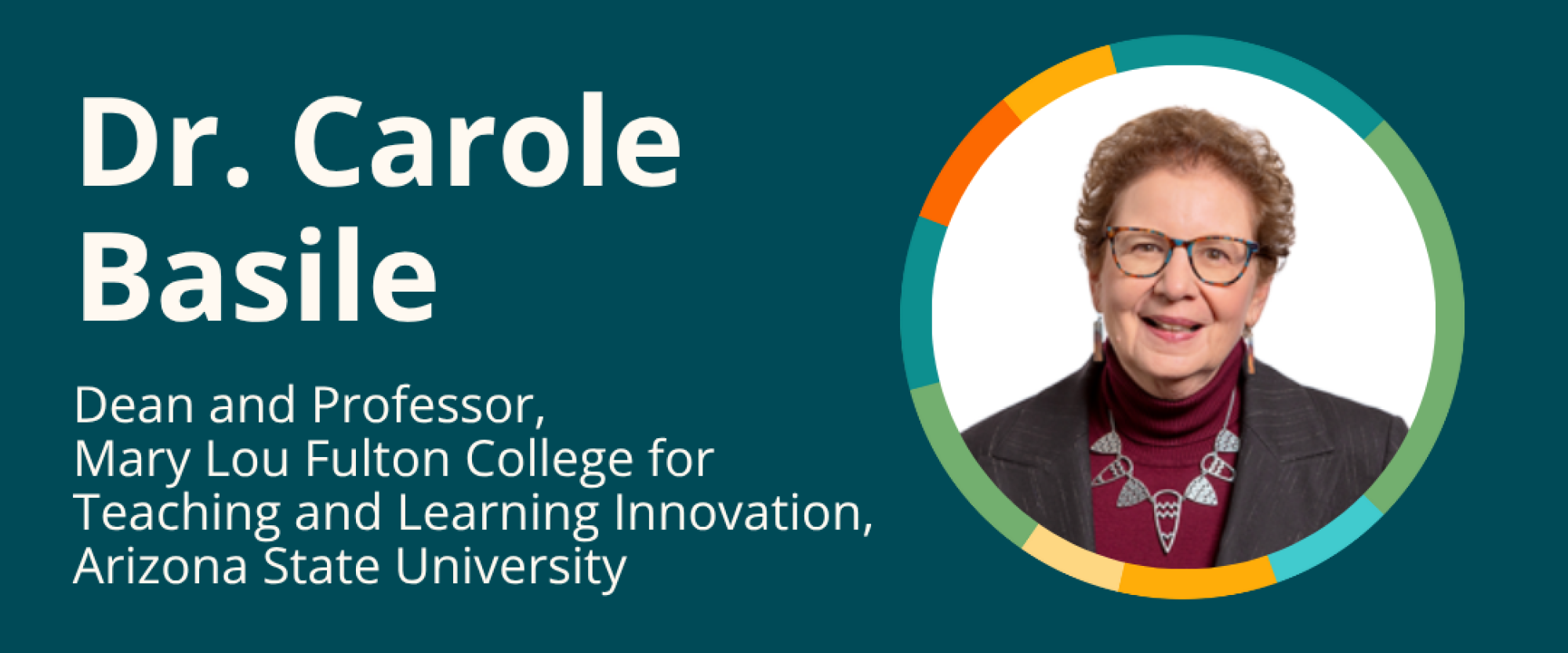Personalized learning, an instructional approach championed in K-12 progressive education, is built on the idea of customized lesson plans for every student. But how would this work in a traditional classroom? Dr. Carole Basile, dean and professor at Arizona State University’s Mary Lou Fulton College for Teaching and Learning Innovation believes the answer begins with how we organize schools. On The Innovating Together Podcast, she describes a new model that helps educators work in teams, align their strengths, and create learning environments where every student can thrive.
Her ideas start with a simple but powerful insight: our education systems were designed for the “average” student.
Designing Schools for Variance, Not Uniformity
When we think about innovation, we generally think about achieving results different and better from what came before. Yet an improved result often emerges from changing a familiar process, and Dr. Basile has developed a set of innovations based on over 40 years of studying how education systems work.
Entire systems, she observes, are built on the idea of average: the average learner, the average educator, one teacher, one classroom, assignments and assessments built for an average person. That version of a student or teacher doesn’t actually exist.
“If we're going to learn anything about learning and teaching, we have to solve for variants, because every single human being is different.”
The only realistic way to effectively teach a population built of variants is through fundamentally changing the structure of our education system. Basile advocates for stepping back from the one teacher, one classroom model to consider how a school can build teams based on who educators are, the roles they play, and how they work together. “And then,” she says, “we can think about how we prepare them.”
A focus on variance moves personalized learning beyond the classroom to the systems that make it possible.
Building a Model for Personalized Learning
To understand the dominant model for K-12 education, imagine 100 students at the same grade level divided between four teachers. Within each classroom, that teacher is expected to work in isolation and be all things to all students at the same time. In that setup, innovation is nearly impossible.
“Now think about those four teachers, and the expertise and experience of each one. Who do you want for your kid? The answer is you want all of them.”
Dr. Basile’s model begins with examining who the learners are, identifying what expertise each student might need from this team of teachers, and then creating a structure that deploys those skills intentionally. This approach turns personalized learning from an individual task into a collective responsibility. She often points out that businesses reorganize teams all the time to better match talent with needs, and schools should have the same flexibility.
“So why not strategically staff around a group of kids based on who they are individually, not on the statistical abstraction of average? Now we can ask how do schedules need to change? How do people learn from each other in real time? How do we create a more flexible environment? This is not only a better learning environment for kids. We also have a better working condition for the educators. That's been at the crux of what we're doing.”
Her model envisions schools as dynamic ecosystems where teachers collaborate, learn from one another, and share ownership of student success. The goal is a system that adapts as people grow, both students and educators.
Using EdTech to Design More Effective School Systems
Dr. Basile believes that the traditional way of thinking about retention and recruitment is no longer adequate for addressing teacher shortages. She invites local school boards and state education departments to broaden their strategic frames by including workforce development and design for K-12 teacher prep.
“This is about people in the teaching profession today: who they are, how they're utilized, how we deploy them, and what kind of roles they play. This is a way for us to identify these issues as part of a workforce design and development problem.”
Basile’s business background shaped this perspective. She sees education as a workforce system built around people’s strengths and supporting them with smart structures.
To help students thrive and reach their full potential – as well as the educators who teach them – Basile says that EdTech can help schools understand how students think, how teachers collaborate, and how systems perform.
“AI is a game changer as we start to look at inputs instead of outputs so that we can actually see how kids are solving problems, how they're thinking, and what questions they ask.”
Formative assessments can also show the teachers’ areas of strength, which can assist in building teams, adjusting curriculum, and addressing systemic problems. At the HR level, this data can offer valuable perspective for workforce decisions such as hiring staff, including adjuncts, paraprofessionals, and other subject matter experts.
By combining human insight with data-driven understanding, schools can create environments where both students and educators are better supported.
Pilots, Data, and Promising Outcomes
Theoretical as all of this might sound, the teachers-as-workforce model is already showing results in numerous pilot programs. The first school to adopt was in Kyrene, Arizona, closely followed by the city of Mesa, which scaled the model to 42 schools in its district. Dr. Basile says that it’s now being used in about 150 schools across 17 states, impacting roughly 27,000 students nationwide. She's seeing global interest as well, most notably from the Netherlands.
“This is more than just an idea. It's something that people are actually trying. Context matters, too. Each school is probably doing this in a very different way or at a different pace.”
Early data from these pilots are promising. On the teacher side, schools report greater job satisfaction, fewer absences, and stronger retention. Students have been responding with fewer disciplinary actions, better attendance, a greater sense of having their needs met, and more comments about feeling seen.
“The more schools that we have an opportunity to do this with, the more we see the domino effect of creating a system for variance. When we get rid of this one teacher, one classroom model, teachers can think about their own autonomy and also about accountability. Those things have made a tremendous difference.”
Basile calls this ripple effect “a system for variance,” a structure that adapts to context, scales across settings, and keeps people at its center.
The Future of Education Innovation
In her efforts to influence education policy with these findings, Dr. Basile has testified before Congress about the possibilities of the educators-as-workforce model. The focus is on K-12 education, yet any systemwide changes that come about will also affect higher education. The transformation, she explains, would begin in schools of education with a radically different approach to teacher training and would ripple outward across the field.
“I think the role of a faculty member is going to change, because there's an opportunity here to re-envision what higher ed looks like as well. It takes some money to enact change, but these models don't cost more. What they need is permission. We need a movement of people saying, ‘Yes, do this because this is the right thing to do.’”
In the current national climate, institutional and political innovation are likely to meet resistance. Dr. Basile encourages leaders to persevere, build partnerships, and pursue available funding. She believes the progress may be gradual, but it will come, because improving student outcomes is a shared priority across all sectors.
“Our education systems, whether public, private, or charter, they all pretty much look the same. The vision is very, very clear about what we want to do and how we're going to get there. You just have to keep doing the work if you know it's the right work and if you're seeing the right kind of results.”
As Basile’s work continues to expand, her message remains consistent: innovation is possible when people align around a clear vision and give one another permission to lead.
Note: This episode of the University Innovation Alliance’s Innovating Together Podcast originally aired on July 21, 2025. The podcast appears live on YouTube, Facebook, Twitter, and LinkedIn.
Resources Mentioned in This Episode
- Personalized learning - Education Week
An overview of the origins and practices of this instructional approach - Mary Lou Fulton College for Teaching and Learning Innovation
Arizona State University’s college of education draws from a wide range of academic disciplines, offers a full range of degree and non-degree professional development programs, and studies the performance of education systems. - Formative assessments – University of San Diego Professional and Continuing Education
An overview of in-class tools and strategies for evaluating student progress - Carole's Congressional testimony
Carole presented her findings to the House Committee on Education and the Workforce.
Watch the Archive
Bios of Guest and Co-Hosts

Carole G. Basile is the Dean of the Mary Lou Fulton College for Teaching and Learning Innovation at Arizona State University (ASU). Her work has centered on redesigning the education workforce and workplace by creating models for team-based teaching to drive more equitable working and learning environments for educators and learners. She currently works with education organizations nationally and internationally to design new systems for educators and their students and enable organizational change. With over 30 years in higher education, she leads the development of a new blueprint for education workforce and the preparation of a broad base of educators supporting learners. She has published numerous articles, books, book chapters, and technical papers. Her books include: A Good Little School; Intellectual Capital: The Intangible Assets of Professional Development Schools; and as co-author (with Brent W. Maddin and R. Lennon Audrain) Next Education Workforce: How Team-Based Staffing Models Can Support Equity and Improve Learning Outcome. Dr. Basile is an invited speaker at national and international conferences and meetings about Next Education Workforce and is committed to scaling change for learners, educators, and communities. She earned her B.S. in Individual and Family Studies and M.Ed. in Counselor Education from Pennsylvania State University, and her Ed.D. in Curriculum and Instruction from University of Houston.

Co-Host: Bridget Burns, Executive Director, University Innovation Alliance
As a trusted advisor to university presidents and policymakers, Dr. Bridget Burns is on a mission to transform the way institutions think about and act on behalf of low-income, first-generation, and students of color. She is the founding CEO of the University Innovation Alliance, a multi-campus laboratory for student success innovation that helps university leaders dramatically accelerate the implementation of scalable solutions to increase the number of college graduates.
About Innovating Together
Innovating Together is an event series that happens live on YouTube, Facebook, Twitter, and LinkedIn. It also becomes a podcast episode. Every week, we join forces with Inside Higher Ed and talk with a higher education luminary about student success innovations or a sitting college president or chancellor about how they're specifically navigating the challenges of leadership. We hope these episodes will leave you with a sense of optimism and a bit of inspiration.
Rate, Review & Subscribe
Learn why hundreds of people have rated the Innovating Together podcast 5 stars. Please join others and rate and review this podcast. This helps us reach and inform more people -- like you -- who are committed to helping more students succeed.
Click here, scroll to the bottom, tap to rate with five stars, and select “Write a Review.” Then be sure to let us know what you loved most about the episode. Also, if you haven’t done so already, subscribe to the podcast. You'll never miss an episode.

